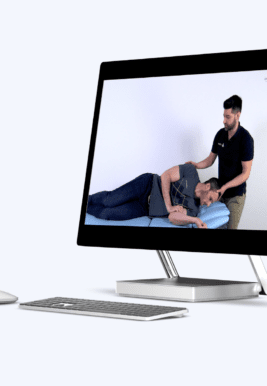Learn
BBQ Roll Maneuver | Geotropic lateral BPPV Treatment | Vertigo
Benign paroxysmal positional vertigo, abbreviated as BPPV is the most common inner ear problem and cause of vertigo, or a false sense of spinning. Common causes are head trauma or ear infections, although most cases appear to be idiopathic.BPPV can be caused by debris in the semicircular canal of the ear, which continues to move after the head has stopped moving. This causes ongoing movement that conflicts with other sensory information.
The semicircular canals are filled with a fluid called endolymph. The main sense organ in each canal is called the crista, which is stimulated by movement of the cupula. Head rotation causes relative movement of the endolymph in the semicircular canal, which bends the cupula and the embedded hairs of the hair cells and causes stimulation of the relevant vestibular nerve. The cause of BPPV is believed to be canalithiasis, affecting the posterior semicircular canal in 85 to 95% of all cases. In canalithiasis, free-floating debris in the semicircular canal is hypothesized to act like a plunger, causing continuing movement of the endolymph even after head movement has ceased. This causes movement of the cupula and bending of the hairs of the hair cells and provokes vertigo.
Around 20% of BPPV cases are said to resolve within 4 weeks and up to 50% up to 3 months without treatment, but recurrence is reported between 10-18% after 1 year.BPPV from the lateral semicircular canal tends to self-resolve more quickly than posterior BPPV.
The Barbeque Roll maneuver involves a series of movements of the head and body in order to move the debris out of the lateral semicircular canal. Several cohort studies and case reports have reported success rates between 50 to 100% for the barbeque roll maneuver to treat geotropic lateral semicircular canal BPPV and Kim et al. in the year 2012 have shown that the barbeque roll performed better than sham maneuvers in both 1 hour and 1 month after treatment. Be aware that the Barbeque roll maneuver can lead to nausea, so make sure you have a bucket at hand, in case your patient might need it. The patient should be counseled that his symptoms of vertigo will be reproduced and that he might feel nauseous. On top of that, make sure that your patient is able to tolerate neck movement.
In order to perform the barbeque roll successfully, you should have diagnosed the affected side during the supine head roll test before. Click on the info button in the top right corner to learn more about this test.
To start with the maneuver have your patient lie on the treatment bench in supine position. Some authors recommend rolling the head towards the affected side as the first step. So for the right ear, we are starting in maximal rotation to the right. This position is then held for 15-30 seconds or until the nystagmus stops. Then roll your patient’s head to the unaffected side. Again, hold this position for 15 to 30 seconds or until the nystagmus has diminished. As a next step, keep your patient rolling in the same direction until your patient’s head is completely nose down and he is lying in prone position for another 15 to 30 seconds. Some authors recommend ending the maneuver here and returning your patient into sitting position as anatomically the debris is repositioned. Originally, the roll is completed to 360°, so the patient rolls further onto his right side and the position is again held for 15 to 30 seconds or until the nystagmus has stopped. At las, the patient is then returned into sitting position.
A meta-analysis from Devaiah et al. from the year 2010 showed that post-maneuver restrictions are not necessary as they have not shown any significant benefit compared to no restrictions. The literature demonstrated the beneficial effects of multiple treatment sessions for patients with persistent nystagmus following the initial maneuver.
LEARN TO TREAT THE MOST COMMON CAUSE OF VERTIGO IN THIS FREE MINI-VIDEO-SERIES

In case you suspect posterior BPPV, you will have to perform the Epley Maneuver or the Semont Maneuver.
References:
References
Like what you’re learning?
BUY THE FULL PHYSIOTUTORS ASSESSMENT BOOK
- 600+ Pages e-Book
- Interactive Content (Direct Video Demonstration, PubMed articles)
- Statistical Values for all Special Tests from the latest research
- Available in 🇬🇧 🇩🇪 🇫🇷 🇪🇸 🇮🇹 🇵🇹 🇹🇷
- And much more!








